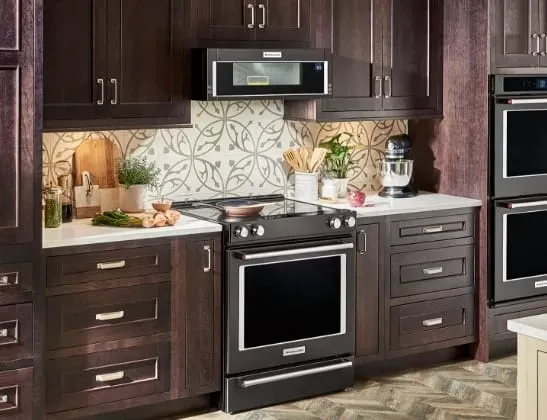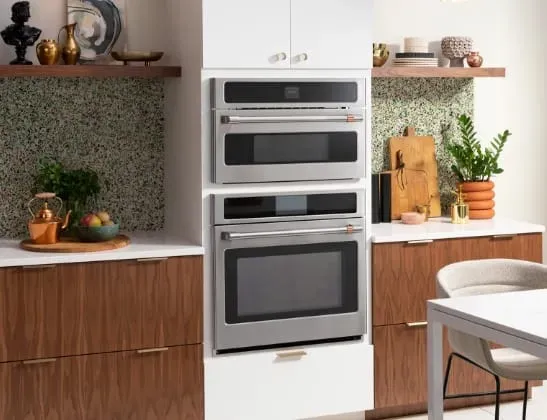Shopping Guide - Gas, Electric & Convection
Mon Sep 20 2021
- Ovens
Shopping Guide: Gas, Electric, and Convection
Whether you bake, cook, or broil, cooking is all about the heat.
It won’t matter how many features or extras you shop if you don’t have the right source of heat to fit your lifestyle. While shopping for a new range, you will need to make a decision of what type of heat will fuel your oven: gas, electric, or convection?
First, it’s important to understand how each method works. Gas ovens use either natural gas or your home’s propane to ignite a flame of the main burner at the base of the oven and radiate heat from the flames into the oven to heat it to the desired temperature. Electric ovens use a large element at the bottom of the oven to heat the cavity. Convection ovens can use either gas or electric to heat the chamber but feature more heat sources and use a fan to move heat around the oven.

Gas Ovens
Gas ovens use gas as a direct source to fuel the flame so they are able to heat the oven quicker than electric ovens. However, the distribution of heat inside of a gas oven can sometimes be inconsistent as gravity causes hot air to rise and cool air to fall. The result is you may have some cold spots that cause foods to cook unevenly. Gas ovens tend to have higher humidity than electric ovens so foods tend to crisp and brown more easily. Lastly, gas ovens tend to cost a bit more than conventional electric ovens, especially if you don’t already have a gas line installed in your kitchen.
Electric Ovens
Electric ovens are heated by a large element at the bottom of the oven. This element is able to heat the oven slowly so heat distribution is more even than gas ovens. The extra time means you’ll want to include preheating time whenever you plan out a meal. Since the bottom element isn’t as intense as gas, foods are less likely to burn on the underside when inside an electric oven. Be aware that even electric ovens can’t avoid the laws of thermodynamics and therefore the top of the oven will be hotter than the bottom. They are more affordable than gas ovens and tend to come in more models and configurations.
Convection Ovens
Convection ovens solve the problem of uneven heat distribution found. It has three electric elements located throughout the oven capacity and uses a powerful fan to swiftly move hot air around your foods. The result is even heat and therefore even cooking. This quick, even heat distribution also means cooking times are cut by nearly 25% which means recipes will need to be adjusted accordingly. They heat quickly while using the same amount of energy as gas ovens to heat the cavity so you can save on utility bills. Keep in mind that a handful of foods don’t do as well in convection ovens, such as fluffy cakes. Convection ovens are a little pricier than convection gas and electric ovens.
Each cooking method has its own advantages and disadvantages so it will come down to your preference (and setup). Visit your nearest Kelly’s Home Center to meet our appliance specialists to help you choose the right oven today!


Related Articles
Welcome to our website! As we have the ability to list over one million items on our website (our selection changes all of the time), it is not feasible for a company our size to record and playback the descriptions on every item on our website. However, if you are an American with a disability we are here to help you. Please call our disability services phone line at 309-691-4100 during regular business hours and one of our kind and friendly personal shoppers will help you navigate through our website, help conduct advanced searches, help you choose the item you are looking for with the specifications you are seeking, read you the specifications of any item and consult with you about the products themselves. There is no charge for the help of this personal shopper for any American with a disability. Finally, your personal shopper will explain our Privacy Policy and Terms of Service, and help you place an order if you so desire.
Copyright © 2009 - 2025 Company All Rights Reserved.
This site is protected by reCAPTCHA and the Google Privacy Policy and Terms of Service apply.

